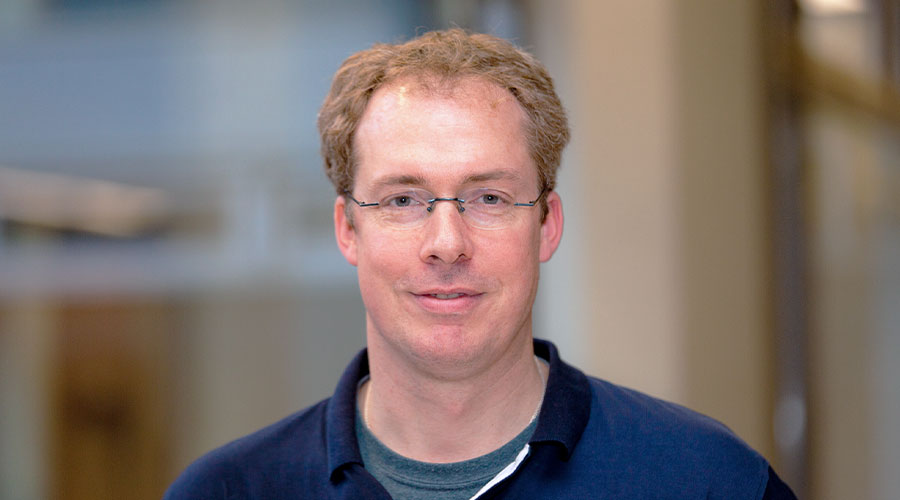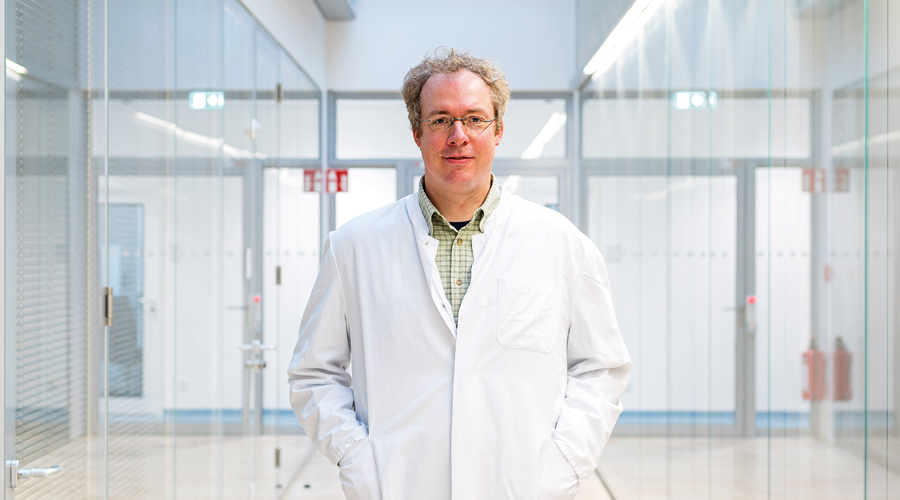| My Research Interest in RESIST |
Our research focus in RESIST is the development and validation of a prophylactic Hepatitis C virus (HCV) vaccine based on the induction of potent broadly neutralizing antibodies (bnAbs) targeting the HCV glycoproteins. Such a vaccine will successfully complement the available treatment options and facilitate global control of HCV. Following this research strategy, we build on our longterm experience with the structural characterization of neutralization epitopes within the HCV glycoproteins. In collaboration with RESIST partner Thomas Pietschmann we will set out to characterize the evolution of bnAbs in vivo, the epitopes they target and the maturation pathways that B cells undergo to produce them. We also intend to utilize the accumulating structural information on HCV neutralization epitopes by applying novel structure-based approaches to create highly immunogenic vaccine antigens that elicit a protective humoral immune response against HCV.
In addition, together with RESIST partners Sodeik, Grünewald and Messerle we focus on the assembly of infectious Herpesvirus particles. We aim to better understand key mechanisms that drive Herpesvirus assembly in order to identify new protein-protein interfaces that are essential for virion assembly, and hence, might provide prime candidates for antiviral intervention.
Prof. Krey in the University of Lübeck
Prof. Dr. Thomas Krey – Curriculum Vitae
Current Position
Undergraduate and Postgraduate Training
Academic and Research Posts
Other Scientific Roles
Awards and Prizes

10 Selected Publications (of > 40 original publications)
Fedry J, Forcina J, Legrand P, Pehau-Arnaudet G, Haouz A, Johnson M*, Rey FA*, Krey T*. 2018. Evolutionary diversification of the HAP2 membrane insertion motifs to drive gamete fusion across eukaryotes. PLoS biology 16:e2006357. (M.J., F.A.R. and T.K. contributed equally to this work)
Ströh LJ, Nagarathinam K, Krey T. 2018. Conformational Flexibility in the CD81-Binding Site of the Hepatitis C Virus Glycoprotein E2. Frontiers in immunology 9:1396.
Vasiliauskaite I, Owsianka AM, England P, Khan AG, Cole S, Bankwitz D, Foung SKH, Pietschmann T, Marcotrigiano J, Rey FA, Patel AH*, Krey T*. 2017. Conformational Flexibility in the Immunoglobulin-Like Domain of the Hepatitis C Virus Glycoprotein E2. mBio 8:e00382-00317. (A.H.P. and T.K. contributed equally to this work)
Fedry J, Liu Y, Pehau-Arnaudet G, Pei J, Li W, Tortorici MA, Traincard F, Meola A, Bricogne G, Grishin NV, Snell WJ*, Rey FA*, Krey T*. 2017. The Ancient Gamete Fusogen HAP2 Is a Eukaryotic Class II Fusion Protein. Cell 168:904-915.e910. (W.J.S., F.A.R. and T.K. contributed equally to this work)
Meola A, Tarr AW, England P, Meredith LW, McClure CP, Foung SKH, Mckeating JA, Ball JK, Rey FA and T. Krey. 2014. Structural Flexibility of a Conserved Broadly Neutralizing Epitope in Hepatitis C Virus Glycoprotein E2. Journal of Virology 89:2170-2181.
Perez-Vargas, J*., T. Krey*, C. Valansi, O. Avinoam, A. Haouz, M. Jamin, H. Raveh-Barak, B. Podbilewicz, and F. A. Rey. 2014. Structural basis of eukaryotic cell-cell fusion. Cell. 157:407-419. (J. P.-V. and T.K. contributed equally to this work)
Tarr, A. W., P. Lafaye, L. Meredith, L. Damier-Piolle, R. A. Urbanowicz, A. Meola, J.-L. Jestin, R. J. P. Brown, J. A. Mckeating, F. A. Rey, J. K. Ball, and T. Krey. 2013. An alpaca nanobody inhibits hepatitis C virus entry and cell-to-cell transmission. Hepatology 58:932-939.
Krey, T., A. Meola, Z.-Y. Keck, L. Damier-Piolle, S. K. H. Foung, and F. A. Rey. 2013. Structural basis of HCV neutralization by human monoclonal antibodies resistant to viral neutralization escape. PLoS pathogens 9:e1003364.
Krey, T., F. Bontems, C. Vonrhein, M. C. Vaney, G. Bricogne, T. Rumenapf, and F. A. Rey. 2012. Crystal Structure of the Pestivirus Envelope Glycoprotein E(rns) and Mechanistic Analysis of Its Ribonuclease Activity. Structure 20:862-73
Gilmartin, A. A., B. Lamp, T. Rumenapf, M. A. A. Persson, F. A. Rey, and T. Krey. 2011. High-level secretion of recombinant monomeric murine and human single-chain Fv antibodies from Drosophila S2 cells. Protein Eng Des Sel:1-8.


